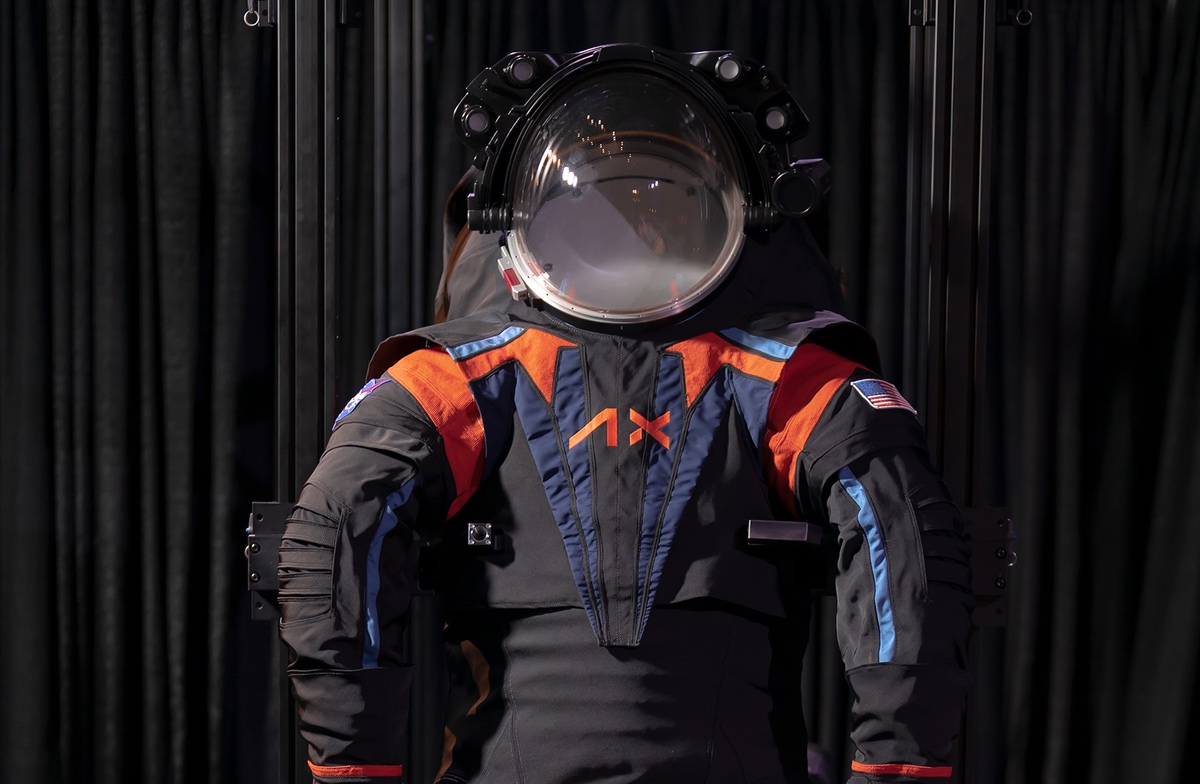Products You May Like
WASHINGTON — NASA and Axiom Space unveiled a prototype of the spacesuits that astronauts will wear on Artemis missions to the moon.
At an event in Houston March 15, Axiom revealed the design of the suit, called the Axiom Extravehicular Mobility Unit (AxEMU), it will provide to NASA for missions starting with Artemis 3 in the mid-2020s. The suits will be worn by astronauts during their excursions on the lunar surface.
NASA awarded Axiom a $228.5 million task order last September to develop the suit after awarding both Axiom and Collins Aerospace contracts last June to provide suits for both Artemis missions and International Space Station spacewalks. The contracts are service agreements, like those NASA uses for space station crew and cargo missions, with the companies retaining ownership of the suits as well as the ability to offer them to other customers.
“It’s a huge deal to be selected to provide to lunar surface suits for NASA’s Artemis program,” said Michael Suffredini, president and chief executive of Axiom, at the event. “We’re pleased that humanity’s next steps on the moon are going to be in an Axiom spacesuit.”
At the time of the task order award, neither NASA nor Axiom disclosed details or even illustrations of the suit design. The company cited proprietary designs and ongoing competitions as reasons for not disclosing details about the design then.
The AxEMU suit revealed at the Houston event leverages designs NASA developed for its Exploration Extravehicular Mobility Unit concept, a spacesuit the agency worked on internally before designing to shift to procuring suits as a service. Those designs are a significant departure from the suits currently used on International Space Station spacewalks or Apollo missions.
That includes a “rear entry” design for the suit, explained Russell Ralston, deputy program manager for extravehicular activity at Axiom, during the event. A hatch in the back of the suit opens up and the astronaut slides into the suit. It’s possible for an astronaut to get into the suit on their own, closing the hatch behind them.
The suit features a large clear helmet bubble for enhanced fields of view, with lights and camera integrated into it. The suit is designed for improved mobility on the lunar surface compared to Apollo suits, and can fit a much wider range of astronauts.
“This is a great example of what innovation can do,” said Peggy Whitson, a former NASA astronaut with extensive spacewalking experience who now works for Axiom Space and will command the company’s upcoming Ax-2 mission to the ISS. “This is going to be much more flexible suit. The range of motion is really going to improve the astronaut’s ability to do all the tasks they’re going to do when out exploring on the lunar surface.”
One challenge for the suit design is dealing with lunar dust that can stick to materials and degrade joints and seals. “Dust is going to be a pretty tricky problem to deal with,” Ralston said. That includes ways to prevent dust from adhering to the suit in the first place, and then, when dust dues stick to it, keep it from coming off when the astronauts go back inside their lunar lander.
While the suit is Axiom’s own design, it makes extensive use of the earlier NASA work. “We have provided all of that technology, all of the drawings, all of the data, all of the test results for the community,” Vanessa Wyche, director of NASA’s Johnson Space Center, said of that earlier suit work.
“We’re happy to have all of that expertise,” Suffredini said. He estimated about half of the AxEMU design will be based on that NASA work and the other the company’s own designs.
The design unveiled at the event is not identical to what Artemis astronauts will wear. The company elected to put a customized cover layer, black with blue and orange accents, on the suit for this event “to conceal the suit’s proprietary design,” the company explained. The actual suit will have a white outer layer to reflect sunlight.
Axiom is best known for private astronaut missions to the ISS and plans to add commercial modules to the station as a precursor to its own commercial space station. Mark Greeley, program manager for extravehicular activity at Axiom, said the company will use a similar design for suits it plans to develop for space station spacewalks, with differences in elements like boots and gloves. “The base configuration is very close for lunar or LEO,” he said.
